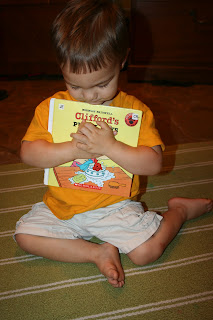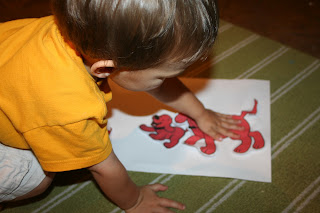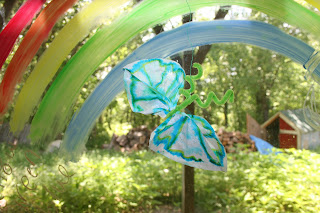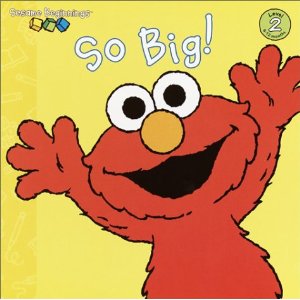By Norman Bridwell
Read It
Clifford--another household favorite--was not always so big. He started out as a little puppy. In this story, Emily Elizabeth learns how to take care of Clifford when he is a small puppy. Some of her toys are too big for Clifford. Some places are too big for Clifford. Emily Elizabeth works to find small, safe places for Clifford--a small bed, a small soup bowl for a bathtub, and small play places. Then one day Clifford finds a small hiding place when Emily Elizabeth's aunt comes to visit. They search the house and no Clifford! With Clifford so small, will Emily Elizabeth be able to find him? Read the story to find out how Clifford makes it home safely.
Enjoy It
Any story about a puppy is fun! This one is especially appropriate for our family, as our oldest has been learning to take care of Little Brother and keep him safe. We have to talk a lot about being gentle and careful. After reading this book, we had a story to reference about people (or puppies) that are small and how we have to find special small things to play with them. For example, sometimes our two-year-old tries to play catch with Little Brother. Now we can say, "Oh, remember how Clifford was too small to play fetch? Little Brother is too small to play catch. We have to wait till he grow BIG like Clifford did." Stories offer great opportunities and connecting points to help kids learn and understand. What kind of lessons can your family draw from this book?
Make It Come to Life
Talking about Clifford being small and growing big made for a great time to talk about big and small things all around us. Teaching children to order things by size is a great pre-mathematics skill. So I decided to find some images of Clifford on Google and print them out in different sizes. Then we ordered them by size and talked about little, big, and biggest! These are great words to help your toddler add to his or her vocabulary set. After we put the Cliffords in order, we had fun looking around the house for big and small things. You can also learn synonyms like giant, huge, enormous, large, mini or tiny. See the pictures below to see what big and small things we found. Happy sizing!
 |
| First we read the book again. |
 |
| Then I set out all the Cliffords. I mixed them all up so Big Brother could put them in order by himself. |
 |
| I asked him, "Can you find the smallest Clifford?" |
 |
| After we glued the small one on I asked him, "Now which one is the smallest?" Next we glued that one on. |
 |
| Until we got to the biggest! |
 |
| Finally we found big and small things around the house. Here is Little Brother playing with a big ball! |
















